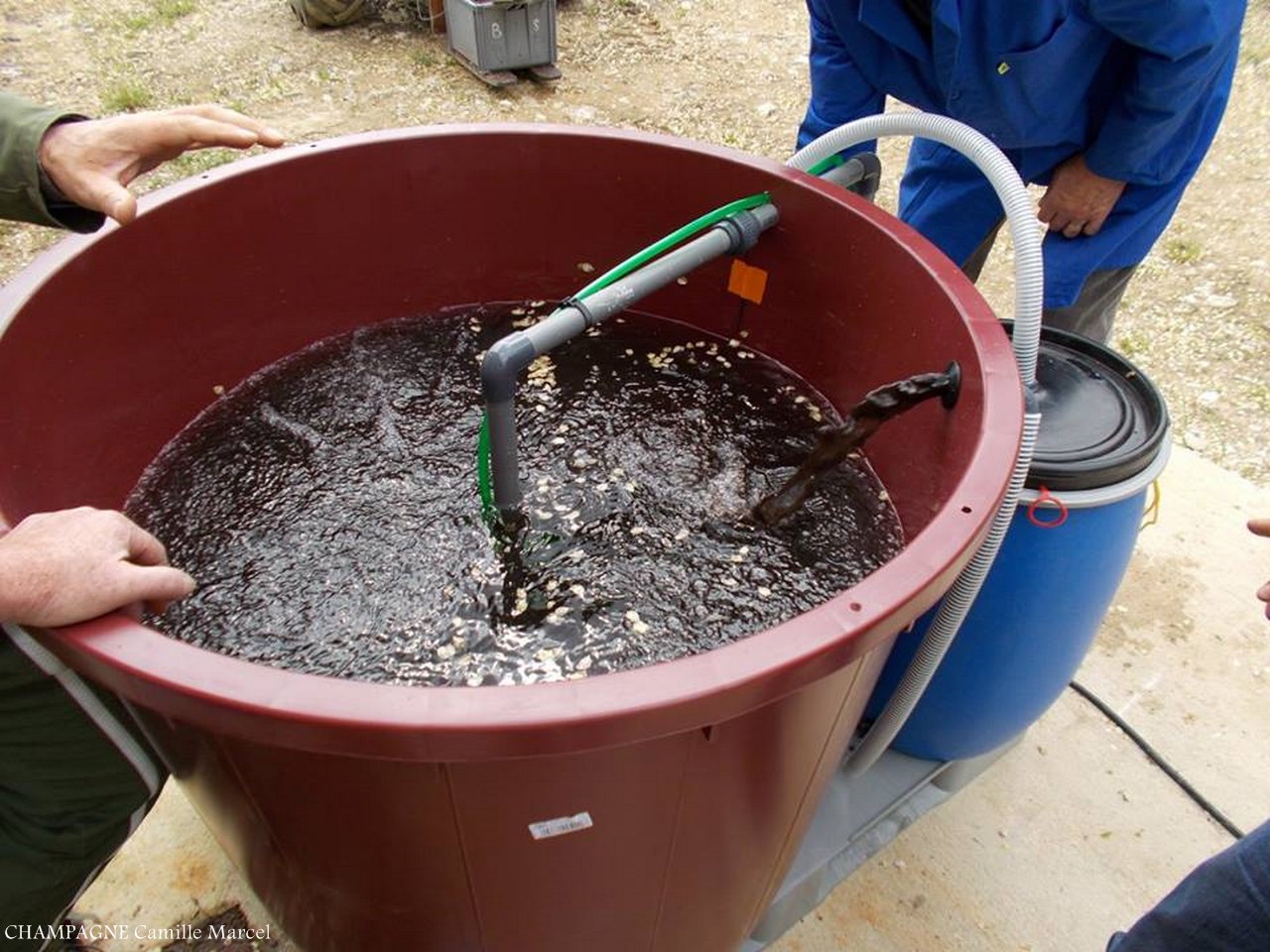Oxygenated compost tea (OCT), or actively aerated compost tea (AACT), is an organic solution obtained by aerating the compost with the aim of triggering the fermentation process. It is an incredibly effective soil life booster that makes an outstanding product for growing cannabis plants.
What exactly is compost tea?
Compost tea is a nutrient-rich infusion coming from compost that helps regulate biological activity in soil, improve its structure and keep it well aerated. Consequently, microorganisms accelerate the decomposition of plant debris. In addition, compost tea protects the rooting zone while helping plants fight pathogens.
Benefits of compost tea:
- Plant growth booster
- Disease suppressor
- Nutrient-uptake improver
- Soil life and balance improver
- Money-saving benefits
- A 100% organic product (harmless to humans and the environment)
How to brew compost tea
What you’ll need:
- A container for extracting/fermenting the OCT (a tank, a bucket…) equipped with a tap. Its volumetric capacity must be of 25-30 l for a small garden and of 1500 l for one hectare of land. In any case, the capacity of the recipient must exceed the solution’s total volume by 25%.
- A big 400-micron mesh to strain all microorganisms and beneficial elements.
- A safe and efficient aquarium pump, large enough to brew 300 l/h of a 15-20 l solution, aimed at pumping oxygen into the tea.
- A sprayer or watering can in order to apply it directly once ready.
- A mixing pump to keep the solution as homogenous as possible.
- An aquarium heater (optional) to heat the water up and provoke the action of microorganisms.
10 liters of high-quality organic compost, preferably homemade and well-fermented. If that’s not the case, it’s better to buy it in a store. - 250 ml of organic green molasses
- 10 liters of chlorine-free water. If tap water is used, let the chlorine evaporate for some 24 hours. PH levels should be neutral or close to 7.
We propose the following brewing method that is particularly easy to carry out. For more elaborate solutions, you can always add soluble bacteria, hydrolyzed fish protein, Kelp algae, charcoal or spirulina. Using chabazite zeolites contributes to the solution’s stabilization while micronized azomites meet all the trace element needs. Epsom salts provide all the magnesium needed for the growth phase.
Each of these elements must constitute 0.1%-1% of the compost tea’s composition, but it is not possible to specify the dosage since the interaction between the different elements could vary substantially depending on the number of elements within the mixture as well as on the preparation method selected.
Inexperienced people could face an additional problem as a result of using the aforementioned elements in excess. If that happens, bacteria and fungi could proliferate too quickly in relation to the amount of oxygen available. Consequently, an anaerobic fermentation (without oxygen) would occur and health-damaging pathogens could appear. That’s why it is better to gradually experiment with the elements, at a pace consistent to you level of experience.
Easily making compost tea step by step:
- Pour the 10 liters of compost in a 25-30l capacity container and add 10 chlorine-free liters of water.
- Add the organic molasses (250 ml)
- Mix vigorously ‘till all solid elements start floating around.
- Leave the solution to rise for some 24 hours, continuously aerating it with the pump. The movement exerted when mixing the water and the compost allows for the extraction of all microorganisms. Later, once the pump is off, it will be necessary to leave the tea to stand for 10-20 minutes. After that time, strain the solution. When the tea is ready, you can spray it directly onto the plants or the soil.
- A well-finished compost tea gives off a really nice aroma. So if the unpleasant odor persists, you may need to add more molasses and more oxygen to the solution with the aim of further activating the microorganisms.
Warning: The useful life of compost tea is not particularly long since, for plants to properly absorb organisms, they need to be activated. More specifically, its useful life is of 6 hours since the last aeration process. If the tea is mixed with highly oxygenated water, it may operate in optimal conditions up to 15 hours after the aeration process. From that moment on, it is better to start from scratch.
Can you imagine the outstanding results an organic cultivation of Black D.O.G., Blueberry Headband or Bubba’s Gift could produce if a well-prepared compost tea is used?
